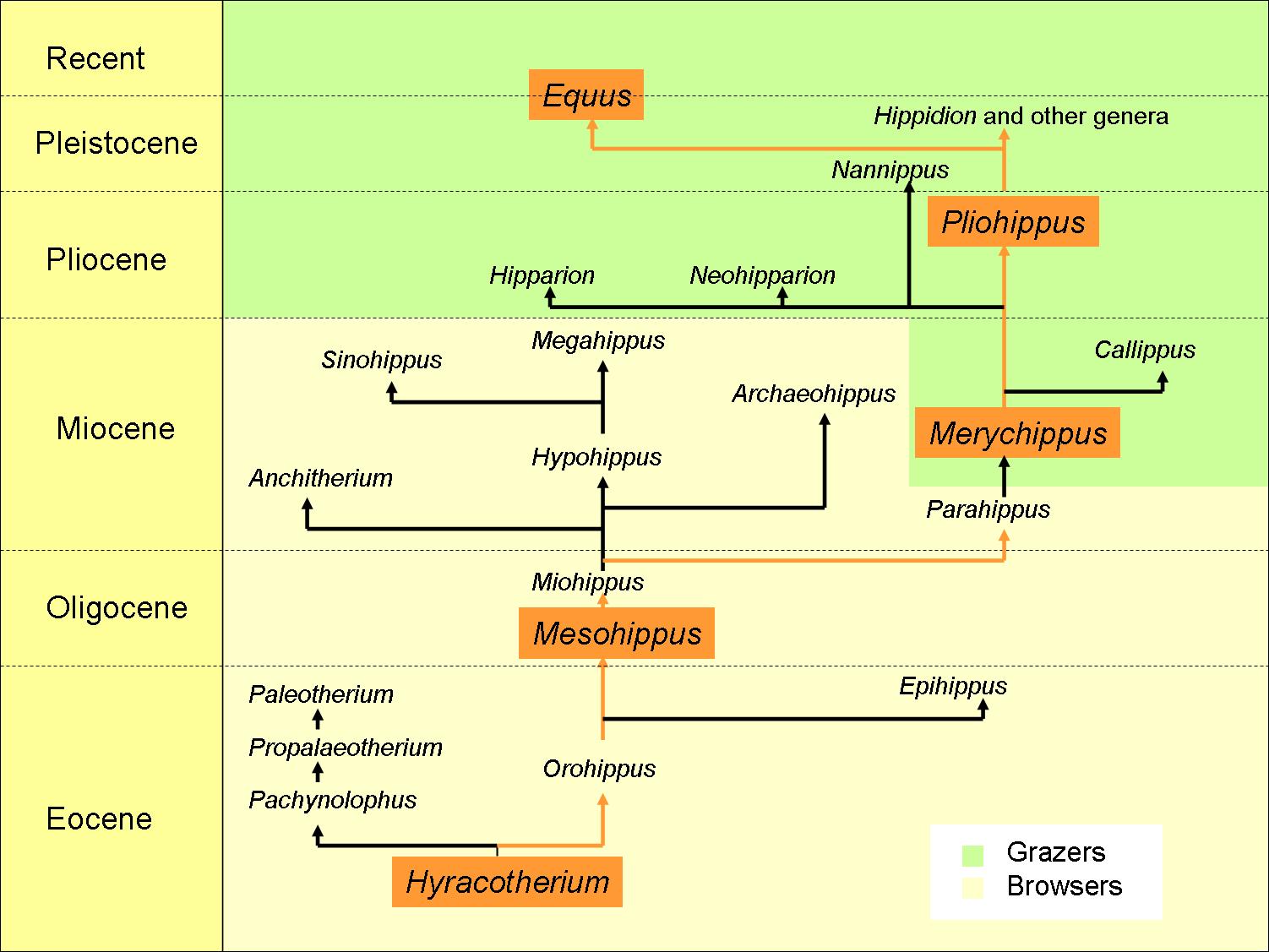
Equidae family tree showing how orthogenesis (orange path) can be interpreted from an incomplete fossil record.
Modified from Campbell & Reece 2002.
The family Equidae
represents the most popularly known example of a linear evolutionary trend,
toward larger size, longer legs, longer teeth, and fewer toes (Benton
and Harper 1997). While this evolutionary view has been found to be false--the
family tree of the horse family is more of a branching bush than a straight
line (Gould 1987)--it continues to be supported and held as a "classic"
example of orthogenesis outside the scientific
community (MacFadden 1992, see Bourdelais 1997 for an example of the linear
trend being taught as fact). The phylogenies of Marsh, Matthew, and Simpson, as well as a currently accepted phylogeny, will be reviewed
here.